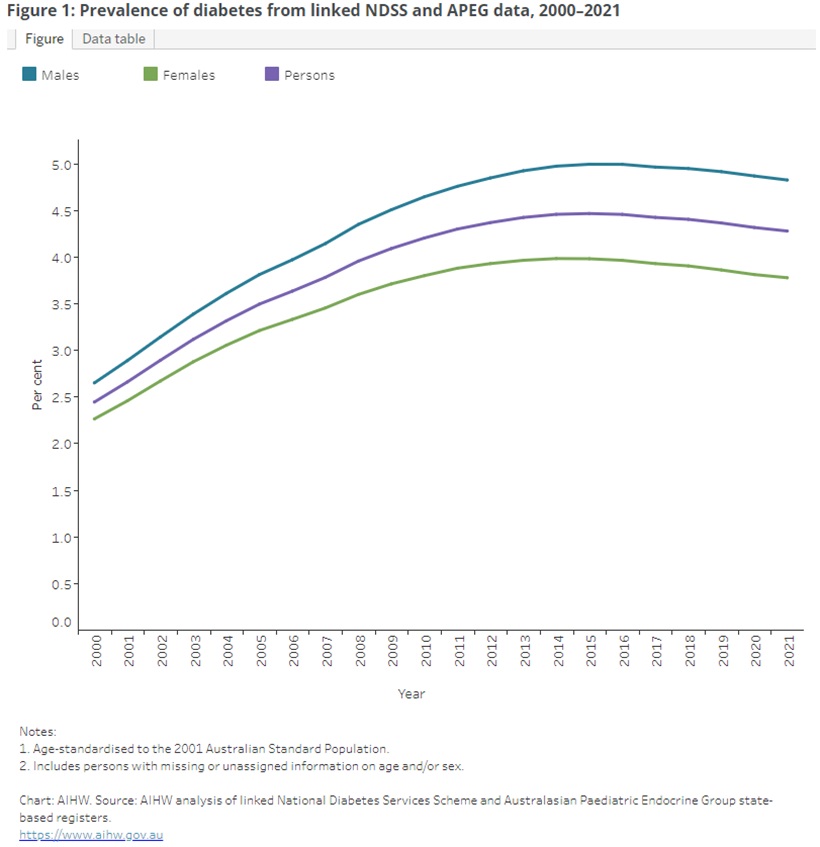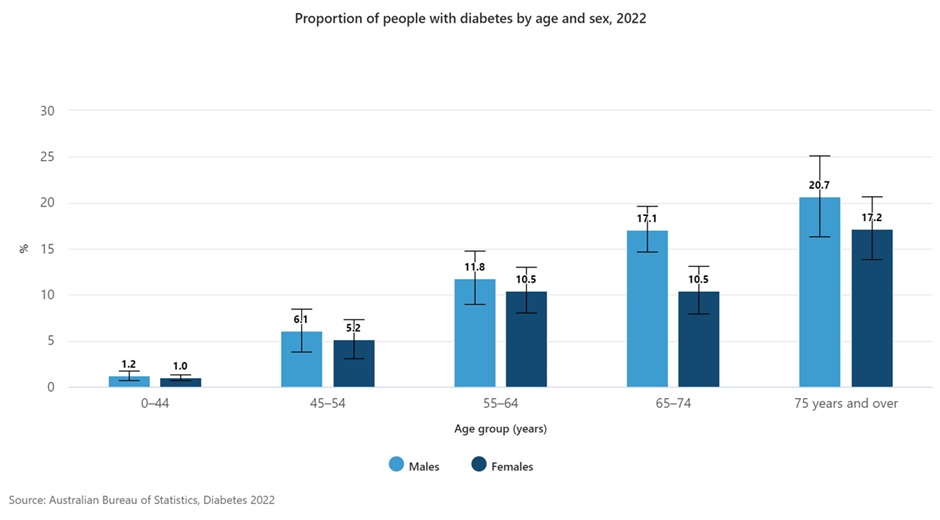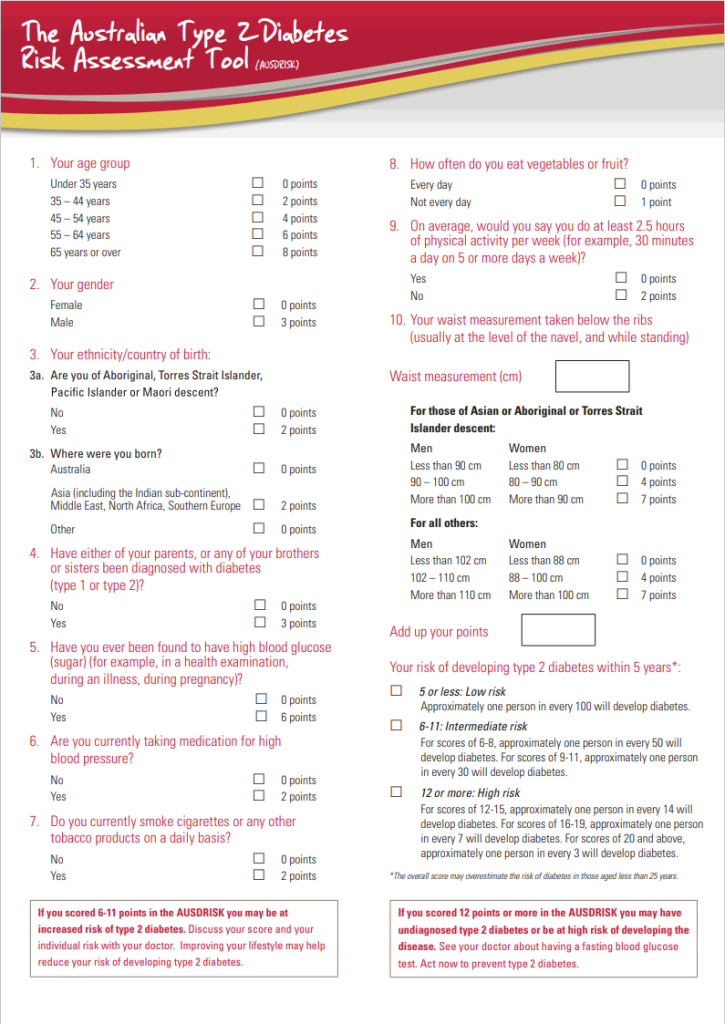6.1.1 Definitions, Epidemiology, Screening and Diagnostic Tests
Learning Outcomes
Be able to:
- Describe the incidence of diabetes in Australia amongst different demographic groups.
- Apply diagnostic criteria for diabetes to initial symptom presentation and monitoring of therapy effectiveness.
Types of Diabetes
Diabetes mellitus is a complex chronic condition underpinned by elevated blood glucose levels due to insulin deficiency (and/or resistance) and the subsequent clinical consequences. Diabetes Australia defines diabetes as a metabolic condition characterised by high blood glucose levels which may arise from either the body’s inability to produce insulin or its inability to respond to insulin. Diabetes is divided into several types. It is important to understand the differences between the types of diabetes and how this impacts treatment. (Please note that Diabetes Mellitus and Diabetes Insipidus are not related).
Type 1 diabetes (T1DM) or insulin dependent (IDDM)
- Insulin deficiency caused by auto-immune destruction of pancreatic beta cells that are responsible for insulin production.
- Non-modifiable, commonly presenting in childhood and adolescence.
- Treated with insulin.
- Approximately 10% of people with diabetes.
Type 2 diabetes (T2DM) or non-insulin dependent (NIDDM)
- Relative insulin deficiency and insulin resistance on a background of progressive loss of beta-cell function.
- Complex interplay of genetic and modifiable lifestyle factors typically presenting after 40yrs of age.
- Treated with lifestyle modifications, antihyperglycaemics and/or insulin.
- Approximately 85% of people with diabetes.
Gestational diabetes (GDM)
- Occurs during pregnancy and is associated with a higher risk of adverse pregnancy outcomes, such as fetal hyperglycemia,fetal macrosomia, difficult births and fetal metabolism alterations.
- Usually resolves following pregnancy however significantly elevated maternal risk of T2DM development later in life.
- Treated with a combination of lifestyle and/or pharmacotherapy
- Approximately 4% of pregnancies.
Other types of diabetes mellitus
- A variety of different comorbidities, medical treatments and genetic subtypes and environmental factors can also contribute to elevated blood glucose levels and insulin deficiency (either complete or relative).
- Managed similarly to T1DM or T2DM depending on underlying pathophysiology.
- Approximately 1% of diabetics.
📺Watch the following brief vodcast on the different types of diabetes mellitus. (21:14 min.)
Epidemiology
Approximately 1 in 20 Australians are currently living with diabetes, making it a common disease that is frequently encountered in clinical practice. Approximately 1.3 million hospitalisations occur each year due to diabetes and it is estimated that diabetes costs approximately $17.6 billion per annum in Australia. The rate of diabetes is twice as high in the lowest socioeconomic group compared to the highest, twice as high in remote and very remote areas compared to major cities and four time higher in Indigenous Australians compared with non-Indigenous Australians.
The number of people living with diabetes in Australia has approximately doubled over the past 20 years. Fortunately, there appears to be a plateauing and possibly a small decrease in prevalence over recent years.

Like many other chronic conditions, the prevalence of T2DM increases with age. This is an important consideration as most patients will have multiple factors contributing to cardiometabolic dysfunction and cardiovascular risk which can influence the choice of therapy.

Over 19 million PBS prescriptions were dispensed in 2022-23 for diabetes therapies making them the 7th most dispensed (and prescribed) group of medications in Australia. A good understanding of these medications is very important as you will see them every day of practice.


